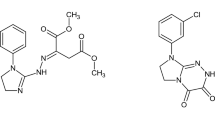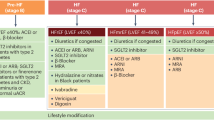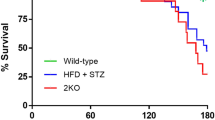Abstract
THE molecular basis of the many effects of 5,5-diphenylhydantoin (DPH, Dilantin) remains obscure. In addition to being the drug of choice in the prevention of seizures1, DPH is used to correct cardiac arrhythmias (mainly those caused by digitalis)2, and to control myokymia (continuous muscle fibre activity)3, and excessive secretion of insulin4 or anti-diuretic hormone5. Side effects include hypotension, hyperglycaemia and disturbances of calcium homeostasis6. Among the actions proposed for DPH are stimulation of active sodium/potassium transport7, inhibition of passive sodium influx in stimulated (but not in resting) cells8,9, reduction of calcium influx10,11, and specific interference with synaptic transmitter movements12. We report here that DPH does not affect active sodium transport, but blocks passive resting sodium channels in much the same way as tetrodotoxin (TTX) does, and we suggest that from this elementary action may follow many of the drug's therapeutic, adverse, and in vitro effects.
This is a preview of subscription content, access via your institution
Access options
Subscribe to this journal
Receive 51 print issues and online access
$199.00 per year
only $3.90 per issue
Buy this article
- Purchase on SpringerLink
- Instant access to full article PDF
Prices may be subject to local taxes which are calculated during checkout
Similar content being viewed by others
References
Woodbury, D. M. & Fingl, E. in The Pharmacological Basis of Therapeutics 5th edn (eds Goodman, L. S. & Gilman, A.) 201–226 (Macmillan, New York, 1975).
Bigger, J. T., Jr Adv. intern. Med. 18, 251–281 (1972).
Isaacs, H. & Frere, G. S. Afr. med. J. 48, 1601–1607 (1974).
Cohen, M. S. et al. Lancet i, 40–41 (1973).
Landolt, A. M. Acta endocr. Copenh. 76, 625–628 (1974).
Richens, A. & Rowe, D. J. Br. med. J. 4, 73–76 (1970).
Woodbury, D. M. J. Pharmac. exp. Ther. 115, 74–95 (1955).
Pincus, J. H. Archs Neurol. 26, 4–10 (1972).
Lipicky, R. J., Gilbert, D. L. & Stillman, I. M. Proc. natn. Acad. Sci. U.S.A. 69, 1758–1760 (1972).
Sohn, P. S. & Ferrendelli, J. A. J. Pharmac. exp. Ther. 185, 272–275 (1973).
Pincus, J. H. & Lee, S. H. Archs Neurol. 29, 239–244 (1973).
Ayala, G. F., Johnston, D., Lin, S. & Dichter, H. N. Brain Res. 121, 259–270 (1977).
De Weer, P. & Geduldig, D. Science 179, 1326–1328 (1973).
Freeman, A. R. Comp. Biochem. Physiol. 40 A, 71–82 (1971).
Hodgkin, A. L. & Keynes, R. D. J. Physiol., Lond. 128, 61–88 (1955).
Schwarz, J. R. & Vogel, W. Eur. J. Pharmac. 44, 241–249 (1977).
Baker, P. F. et al. J. Physiol., Lond. 200, 459–496 (1969).
Neuman, R. S. & Frank, G. B. Can. J. Physiol. Pharmac. 55, 42–47 (1977).
Narahashi, T. Physiol. Rev. 54, 813–889 (1974).
Varga, E., Kovacs, T. & Szabo, B. Acta physiol. Hung. 41, 265–277 (1972).
Matthews, E. K. & Sakamoto, Y. J. Physiol., Lond. 246, 439–457 (1975).
Donatsch, P., Lowe, D. A., Richardson, B. P. & Taylor, P. J. Physiol., Lond. 267, 357–376 (1977).
Guzek, J. W., Russell, J. T. & Thorn, N. A. Acta pharmac. tox. 34, 1–4 (1974).
Gerich, J. E. et al. J. clin. Endocr. Metab. 35, 823–824 (1972).
Pento, J. T. Horm. Metab. Res. 8, 399–401 (1976).
Gutman, Y. & Boonyaviroj, P. Naunyn-Schmiedebergs Arch. exp. Path. Pharmak. 296, 293–296 (1977).
Blaustein, M. P. & King, A. C. J. Membr. Biol. 30, 153–173 (1976).
Blaustein, M. P. Am. J. Physiol. 232, C165–C173 (1977).
Esplin, D. W. J. Pharmac. exp. Ther. 120, 301–323 (1957).
Weinreich, D. J. Physiol., Lond. 212, 431–446 (1971).
Shimizu, H., Creveling, C. R. & Daly, J. W. Molec. Pharmac. 6, 184–188 (1970).
Ferrendelli, J. A. & Kinscherf, D. A. Epilepsia 18, 331–336 (1977).
Author information
Authors and Affiliations
Rights and permissions
About this article
Cite this article
PERRY, J., MCKINNEY, L. & DE WEER, P. The cellular mode of action of the anti-epileptic drug 5, 5-diphenylhydantoin. Nature 272, 271–273 (1978). https://doi.org/10.1038/272271a0
Received:
Accepted:
Issue date:
DOI: https://doi.org/10.1038/272271a0
This article is cited by
-
Effect of chronic administration of phenytoin on regional monoamine levels in rat brain
Neurochemical Research (1995)
-
A comparative study of the effects of tetrodotoxin and the removal of external Na+ on the resting potential: Evidence of separate pathways for the resting and excitable Na currents in squid axon
Cellular and Molecular Neurobiology (1985)
-
Modulation by ouabain and diphenylhydantoin of veratridine-induced 22Na influx and its relation to 45Ca influx and the secretion of catecholamines in cultured bovine adrenal medullary cells
Naunyn-Schmiedeberg's Archives of Pharmacology (1985)



